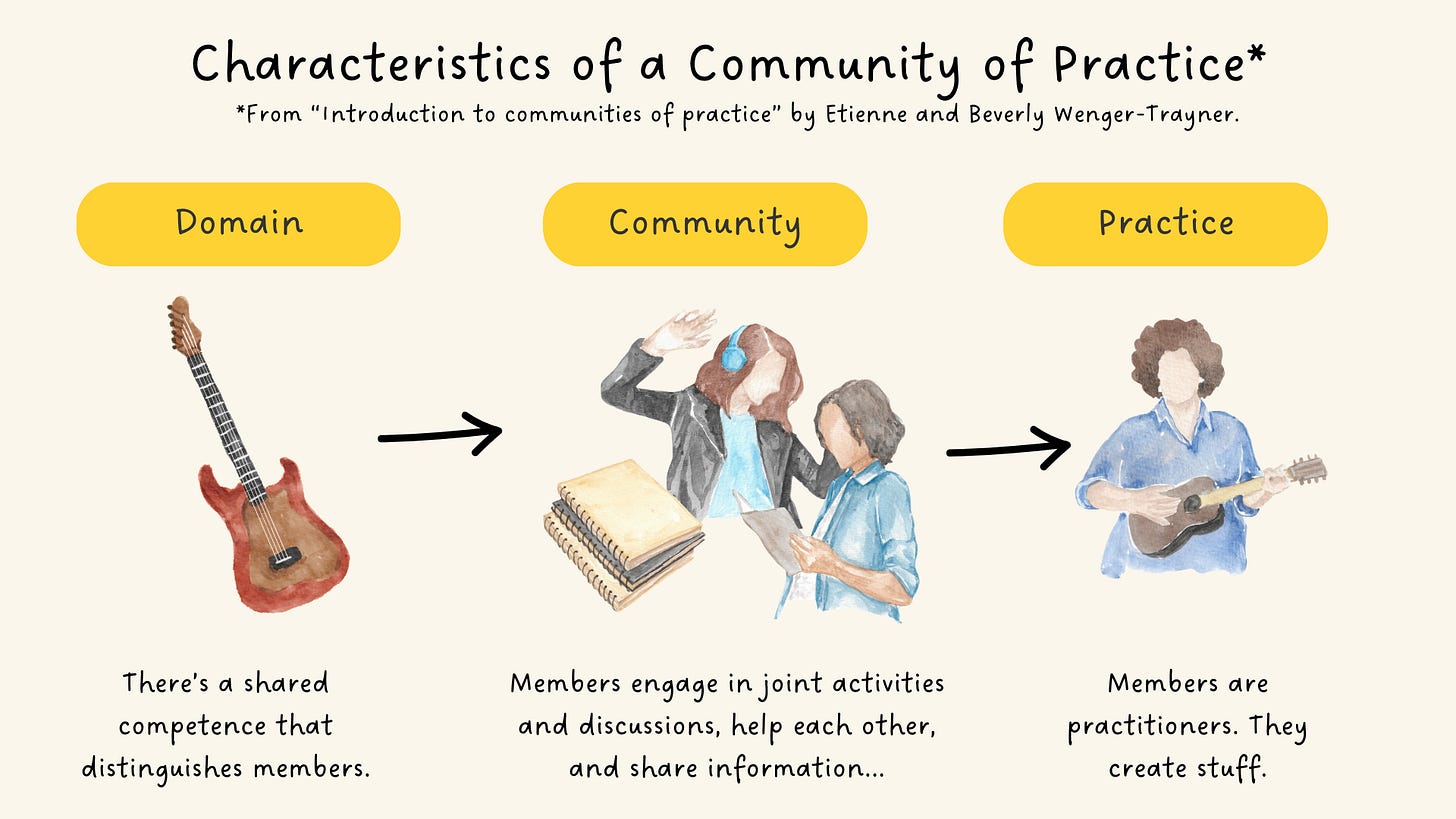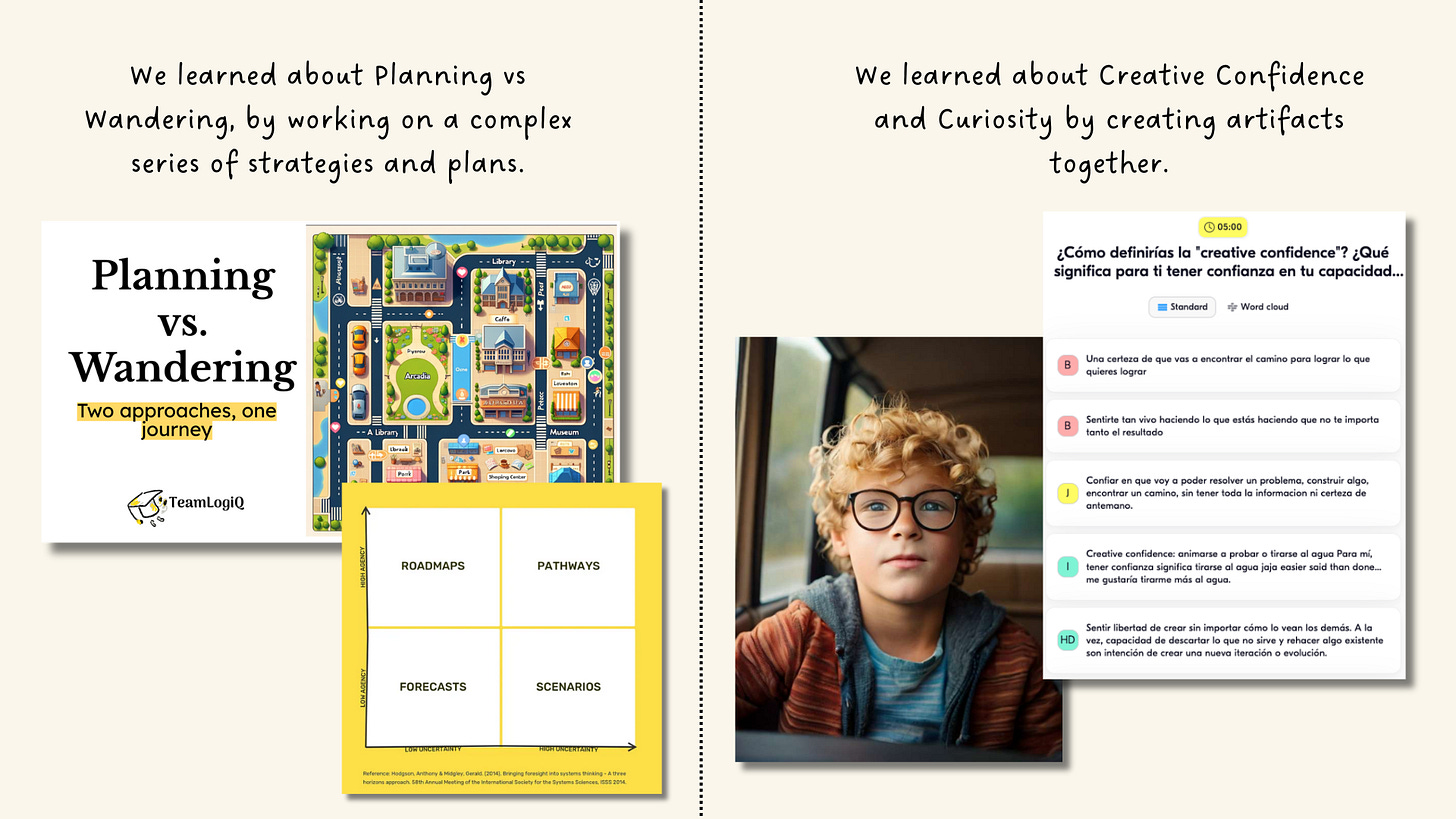Beyond Apprenticeship: Learning in Communities of Practice
The Art of Learning and Creating Together
👋 Hi there, welcome to The Learning Dispatch! Twice a month, we explore creative formats from the world of learning. Created by TeamLogiQ.
If you’re here for the first time, welcome! Feel free to catch up with our previous editions:
🔗 Creating Cultures of Learning
🔗 Learning Through Gamification
Now, on to this week’s format!
In 1727, Benjamin Franklin initiated the Junto Club in Philadelphia, a weekly gathering of curious minds that sparked numerous public initiatives, including the first lending library. Meanwhile, the Lunar Society emerged in Birmingham, England, named for its full moon meetings that facilitated safer night travel in the absence of street lighting. This group of industrialists and thinkers focused on applying scientific ideas to industry and society. A century later in France, the Impressionists gathered in cafes and studios to refine a revolutionary painting style, cultivating their art through collective discourse despite often working solo.
What these three groups have in common is that they formed a social learning system, a community of practice. And that’s the format we’re exploring today.
📰 What’s the format?
Communities of Practice.
When we think about how apprenticeship works, we might think of a beginner learning directly from an expert. Jean Lave and Etienne Wenger1 found something different: a lot of learning actually happens through spending time and working with people who are a bit more experienced but not quite masters yet, like advanced apprentices. They created the term "community of practice" to describe this group where, through collaboration and practical engagement, everyone learns together.
Communities of practice are groups of people who share a concern or a passion for something they do and learn how to do it better as they interact regularly...
A community of practice could be a group of engineers working on similar problems, a network of surgeons exploring novel techniques, or a gathering of entrepreneurs helping each other out.
🎛️ What are the features?
Not everything called a community is a community of practice. Here are the crucial characteristics:
The Domain: A community of practice has an identity defined by a shared domain of interest.
The Community: People build relationships that enable them to learn from each other.
The Practice: Members are practitioners. They develop a shared repertoire of resources: experiences, stories, tools, ways of addressing recurring problems.
For learning to really mean something in a community of practice, both doing things (through discussions and reflection) and making things (through tools, stories, and artifacts) need to happen together.
💡 Why does this matter?
We need to be surrounded by the skills we are to learn, which is why communities of practice are so important. They:
Thrive in a culture that values ongoing learning as a key to success. This entails out-of-the-box thinking, innovative ideas, constructive criticisms, and reflecting on things that we don’t know or don’t turn out as expected.
Are not abstract gatherings. These communities innovate and solve problems. They invent new practices, create new knowledge, define new territory, develop tangible artifacts…
Are spaces to share our successes, our failures, and the respective paths we took to achieve both. The learning happens through the sharing.
Put practitioners in the driver’s seat. Learning is driven by challenges of practice and directly relevant to practice.
Offer ongoing learning loops over time.
🥁 Exploring an example
A year ago, we started our very own community of practice at TeamLogiQ. It’s called the Infinite Minds Club. Our sessions include three elements: socratic dialogues (an upcoming format at the Learning Dispatch!), games, and co-creation.
Building a community of practice takes time. The most important lesson we’ve learned along the way is on the importance of designing intentional moments that knit the group together. Here are a few ways to do that (based on the ideas on The Power of Moments2).
Creating Connection in a Community of Practice
Groups that quickly develop a bond usually share a struggle. A study found that when strangers were asked to perform a painful task together -in once case, submerging their hands in tubs of ice water to perform a “sorting task”- they felt a greater sense of bonding than did strangers who had performed the same task in room-temperature water. And this bonding happened even though the task was pointless! Imagine the bonding that emerges among people who struggle together at a task that means something. People will actually choose to struggle if the right conditions are present: the work means something to them, they have some autonomy in carrying it out, and it’s their choice to participate or not.
Groups that quickly develop a bond usually share a purpose. Purpose trumps passion. Passion is individualistic (my passion isn’t necessarily yours), but purpose is something people can share. And it knits groups together. Imagine a radiologist, day in and day out, analyzing X-rays… each image a cold, impersonal snapshot of someone’s inside story. Then, one day, something changes: photos of the patients are attached to their X-rays. Suddenly, the accuracy of diagnoses improves. Why? Because seeing the person behind the problem makes the work not just a task, but a mission. The strategy is a way of reminding people of their purpose. When communities of practice share a purpose, its members understand the ultimate contribution they’re making and they become more connected because they realize that what they’re doing is bigger than any of them.
📚 Further Readings
The Art of Gathering - A book on how to transform gatherings, by Priya Parker
Gathering Structures - An essay with a small compendium of gathering structures, by Maggie Appleton
We’re a Niche, We Just Didn’t Know - An essay that formulates a new manifesto for a growing community, by Anna Gatt, founder of Interintellect
Socratica - An open collective of makers, artists, engineers, designers, writers, poets, and everything in between who get together for the love of making. They even have their own toolbox.
🏷 Summary
In exploring the power of Communities of Practice, Jean Lave and Etienne Wenger highlight that learning transcends traditional apprenticeship models, thriving instead within groups of individuals who share a domain of interest, engage in collective activities, and cultivate a shared repertoire of resources through active participation and collaboration.
These communities are distinguished by their commitment to ongoing learning, innovative problem-solving, and the creation of tangible artifacts. Genuine connection within these groups often stems from shared struggles and a unified purpose.
👉 Coming Up Next
In our upcoming edition: more on social learning. This time we’ll explore a tool with the power of engaging learners at scale. Stay tuned!
We value your feedback (suggestions, critiques, positive reinforcement, constructive ideas…) as well as your tips or suggestions for future editions. We’d love to hear about you in the comments.
→ Or just click the heart symbol. That always makes our day.
MLA. Heath, Chip, and Dan Heath. The Power of Moments: Why Certain Experiences Have Extraordinary Impact.














